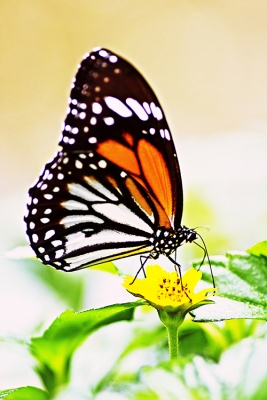
Butterflies don’t eat; that only drink. Though caterpillars constantly eat, once they turn into butterflies, they only drink liquids, primarily nectar from flowers and juices from fruits. Butterflies drink using a proboscis – a tube that works like a straw – because of which they stick to an all-liquid diet.
They do need other nutrients like nitrogen, salts and amino acids. These can be found in tree sap, wet soil and flower pollen. Somewhat less appealing, they can also get these nutrients from rotten fruit or vegetables, faeces, urine, sweat, tears and (the least attractive of all) rotting carcasses!
These nutritional needs stem from the caterpillar’s food. Plants have almost none of the salts that all animals need. Even plant eating mammals like horses and cows need salts – this is also why plants need fertilizers.
Picture Credit : Google







